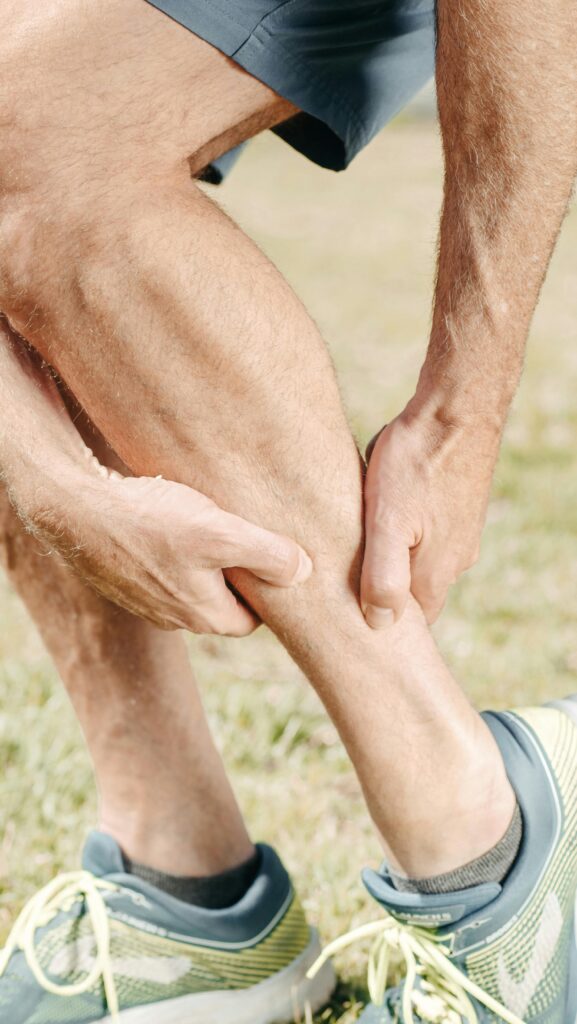Welcome to a friendly discussion on the topic of whether pickleball has more injuries than tennis. As both sports gain popularity, many wonder which one may lead to more injuries. In this article, we will explore the differences between pickleball and tennis, examine the potential risk factors for injuries in each sport, and provide tips for injury prevention. Stay tuned to learn more about staying safe and enjoying your game, whether it’s on the pickleball or tennis court. Does Pickleball Have More Injuries Than Tennis?
Have you ever wondered if pickleball, the popular paddle sport, leads to more injuries compared to traditional tennis? Let’s dive into the world of pickleball and tennis to uncover the truth behind the injury rates in these two sports.
What is Pickleball and Tennis?
Pickleball is a fast-paced paddle sport that combines elements of tennis, badminton, and ping pong. It is played on a smaller court with a wiffle ball and a paddle. On the other hand, tennis is a racket sport played on a larger court with a felt-covered ball. Both sports involve physical exertion and quick movements, making them popular choices for fitness enthusiasts.
Pickleball:
Pickleball is gaining popularity among people of all ages due to its accessibility and ease of learning. The rules are simple, and the court is smaller, making it suitable for players who may not have the same level of endurance or mobility required for tennis.
Tennis:
Tennis, on the other hand, is a more traditional sport with a long history. It requires more extensive court space and can be physically demanding due to longer matches and rallies. Tennis players need to have good stamina, agility, and hand-eye coordination to excel in the game.
Injury Risk in Pickleball vs. Tennis
When it comes to sports, the risk of injuries is always a concern for athletes. Let’s compare the injury rates in pickleball and tennis to determine if one sport poses a higher risk than the other.
Pickleball:
Pickleball is often seen as a less strenuous sport compared to tennis, which may lead some players to assume that it has a lower risk of injuries. However, the nature of pickleball, with its quick movements and the need for sudden stops and pivots, can put strain on the joints and muscles, leading to injuries such as sprains, strains, and overuse injuries.
Tennis:
Tennis is a more physically demanding sport that involves running, jumping, and hitting the ball with force. The repetitive nature of these movements can lead to overuse injuries in the shoulders, elbows, wrists, and knees. Tennis players are also at risk of acute injuries such as sprains, strains, and fractures due to the impact of the game.

Common Injuries in Pickleball and Tennis
Both pickleball and tennis players are susceptible to a range of injuries due to the physical nature of the sports. Let’s explore some of the common injuries that players may experience in each sport.
Pickleball Injuries:
- Sprains and Strains: The quick movements and sudden changes in direction in pickleball can lead to sprains and strains in the ankles, knees, and shoulders.
- Overuse Injuries: Repetitive motions such as swinging the paddle and running back and forth on the court can result in overuse injuries like tennis elbow and tendonitis.
- Impact Injuries: Collisions with other players or falls on the court can cause bruises, contusions, and even fractures.
Tennis Injuries:
- Tennis Elbow: A common overuse injury in tennis caused by repetitive wrist and forearm movements during serves and backhand strokes.
- Rotator Cuff Injuries: Tennis players are at risk of injuring the rotator cuff muscles in the shoulder due to the overhead motions involved in serving and hitting overhead shots.
- Ankle Sprains: Quick lateral movements and pivoting on the tennis court can result in ankle sprains and strains.
Preventing Injuries in Pickleball and Tennis
While injuries are a part of any physical activity, there are steps that players can take to reduce their risk of getting hurt while playing pickleball or tennis. Let’s explore some injury prevention strategies for both sports.
Pickleball:
- Warm-Up and Stretch: Before starting a pickleball match, make sure to warm up your muscles and stretch to prevent strains and sprains.
- Use Proper Footwear: Wear supportive shoes with good traction to prevent slips and falls on the court.
- Practice Proper Technique: Learn the correct paddle grip and footwork to minimize the risk of overuse injuries and strains.
Tennis:
- Strength Training: Incorporate strength training exercises to improve muscle strength and endurance, reducing the risk of overuse injuries.
- Proper Equipment: Use a racket that fits your hand size and playing style to prevent wrist and elbow injuries.
- Rest and Recovery: Allow your body time to rest and recover between matches to prevent fatigue and overuse injuries.

Rehabilitation and Treatment for Pickleball and Tennis Injuries
In the unfortunate event of an injury while playing pickleball or tennis, it is essential to seek proper rehabilitation and treatment to recover quickly and prevent further damage. Let’s look at some common injury management strategies for pickleball and tennis players.
Pickleball:
- RICE Protocol: Rest, Ice, Compression, and Elevation can help reduce swelling and pain for acute injuries like sprains and strains.
- Physical Therapy: Work with a physical therapist to improve range of motion and strength in injured joints and muscles.
- Gradual Return to Play: Ease back into pickleball activities after an injury to avoid exacerbating the condition.
Tennis:
- Anti-Inflammatory Medications: Over-the-counter medications can help reduce pain and inflammation for injuries like tennis elbow and tendonitis.
- Bracing and Taping: Use supportive braces and tape to stabilize injured joints and prevent further damage during play.
- Professional Guidance: Consult a sports medicine physician or physical therapist for specialized treatment and rehabilitation plans tailored to tennis injuries.
Conclusion: Pickleball or Tennis – Which is Safer?
In conclusion, both pickleball and tennis come with their own set of injury risks and challenges. Pickleball may be less physically demanding, but its quick movements and repetitive actions can lead to overuse injuries and strains. On the other hand, tennis requires more extensive physical exertion and can result in acute injuries and overuse conditions.
Ultimately, the safety of playing pickleball or tennis depends on various factors such as skill level, conditioning, and adherence to proper technique and injury prevention strategies. Whether you choose to play pickleball or tennis, remember to prioritize your physical well-being and take steps to prevent injuries while enjoying the game.
So, the next time you pick up a paddle or racket, keep these injury prevention tips in mind to stay safe and injury-free on the court. Have fun playing your favorite sport and remember to listen to your body to avoid pushing yourself too far. Stay active, stay healthy, and enjoy the game!


